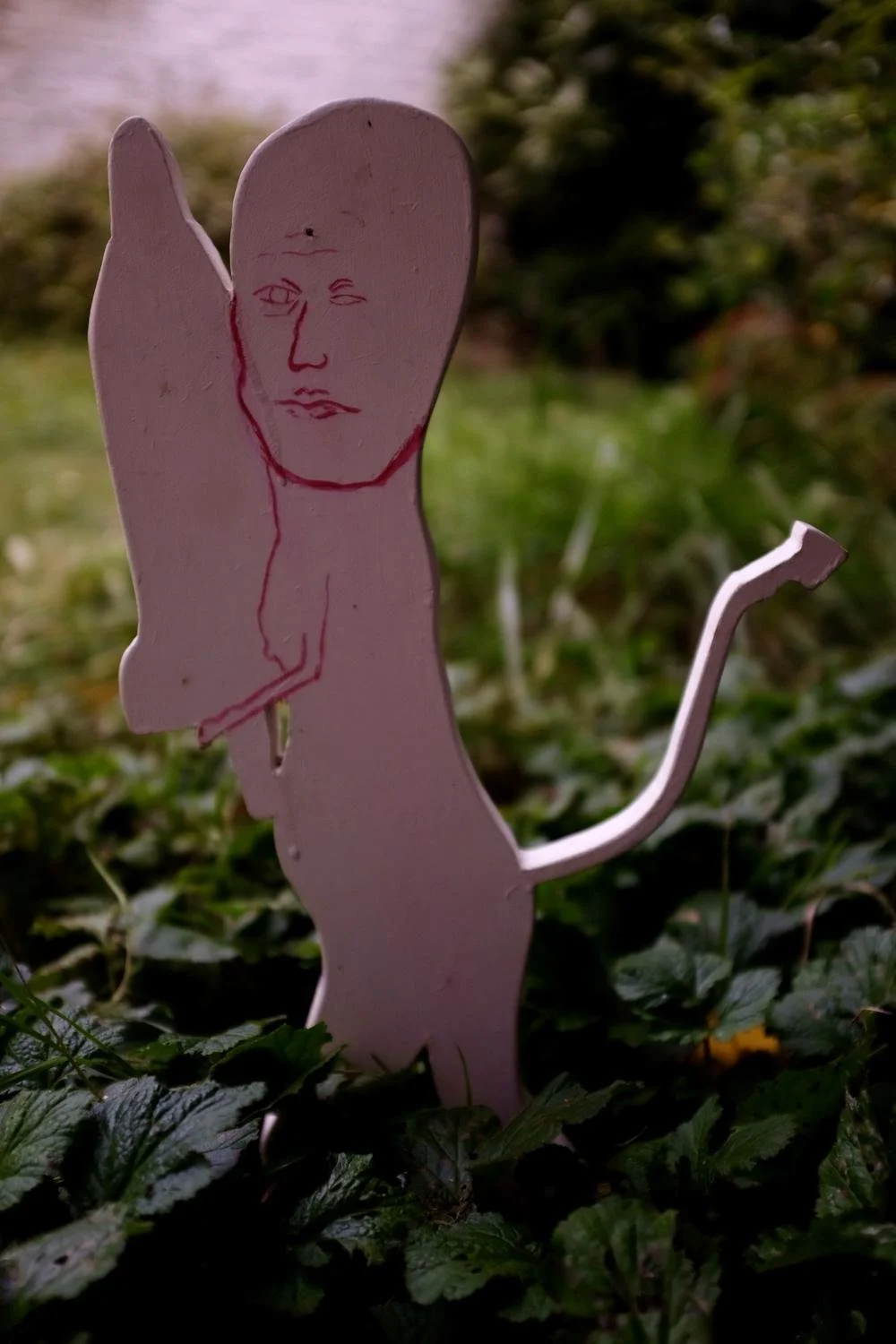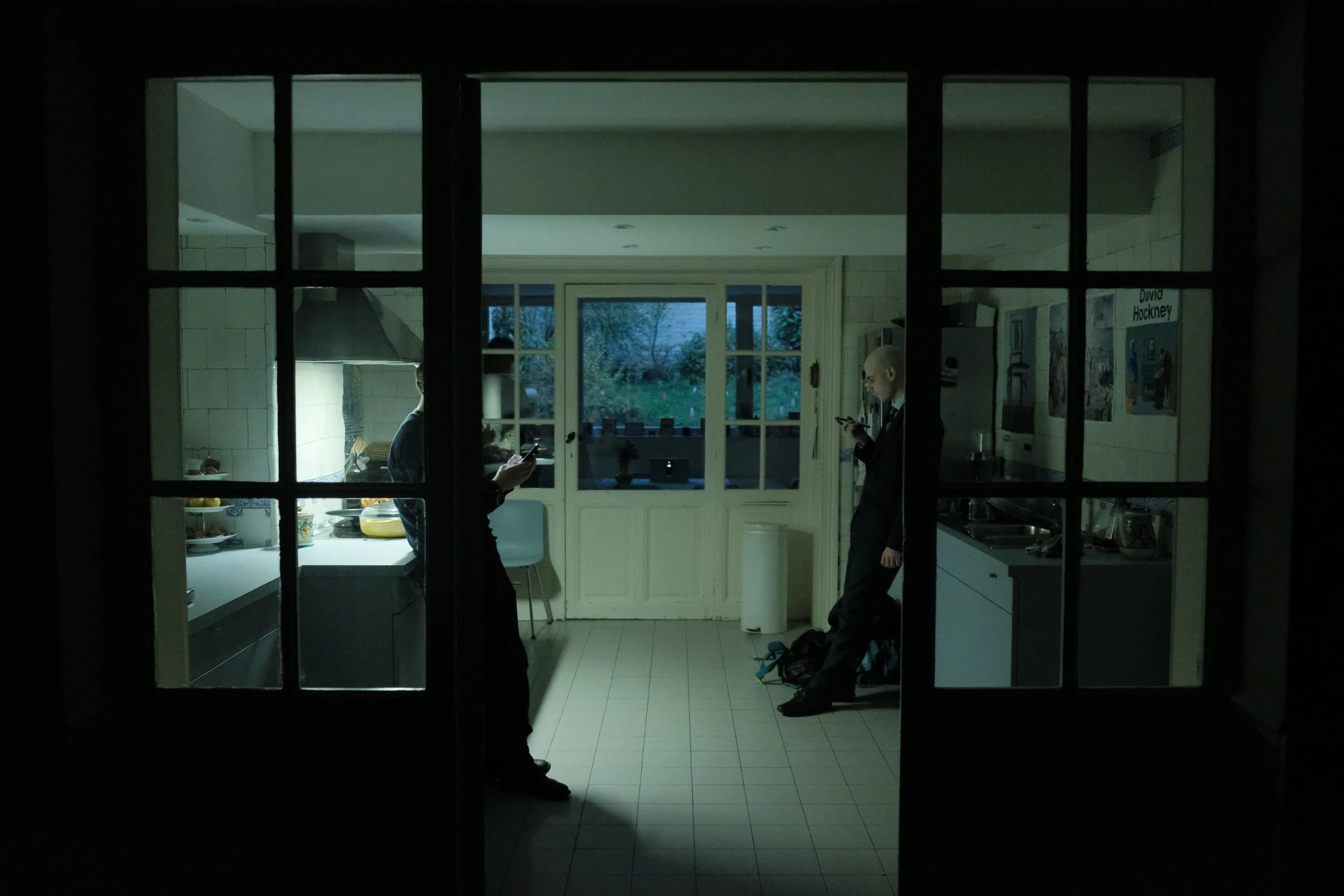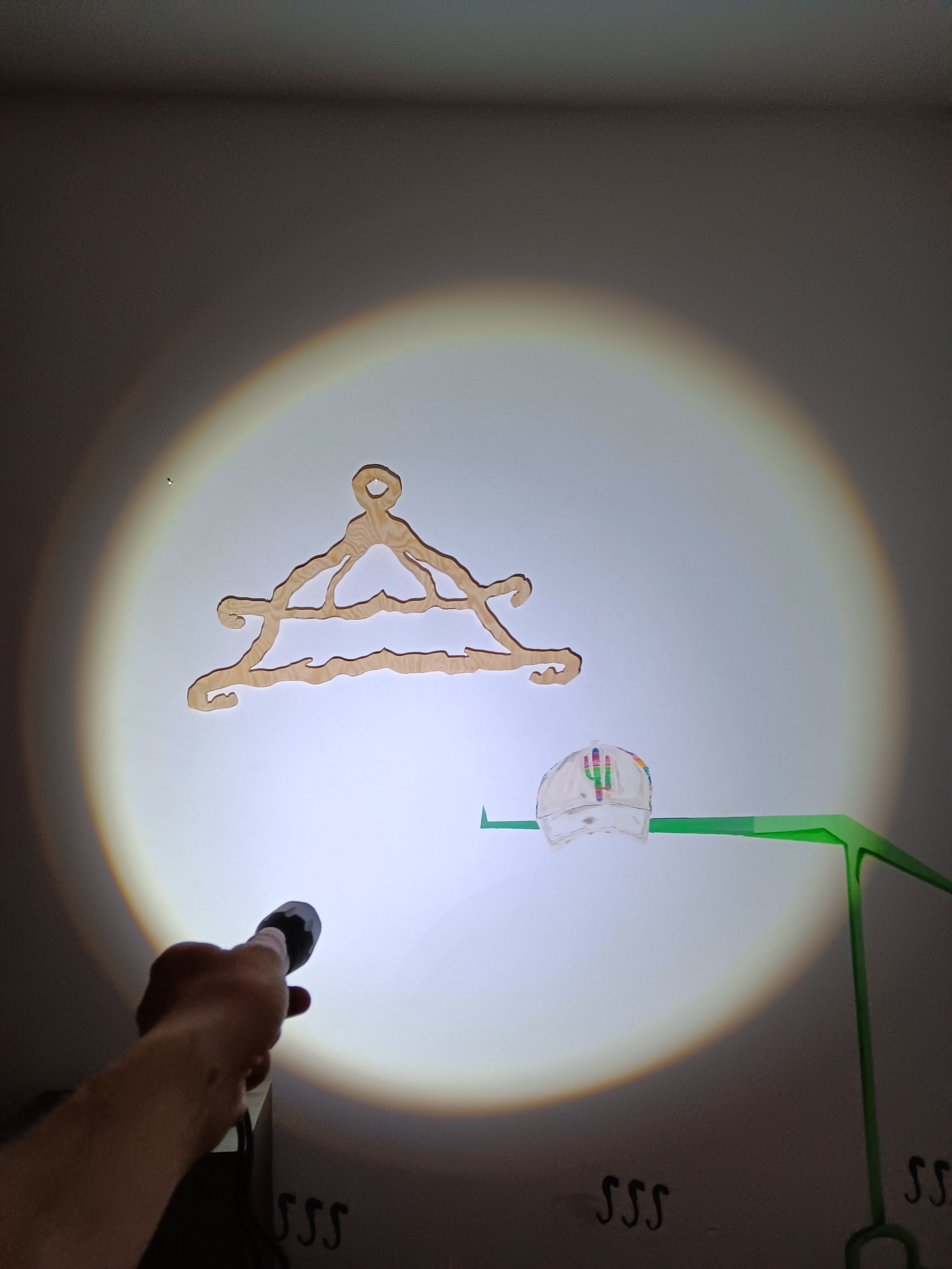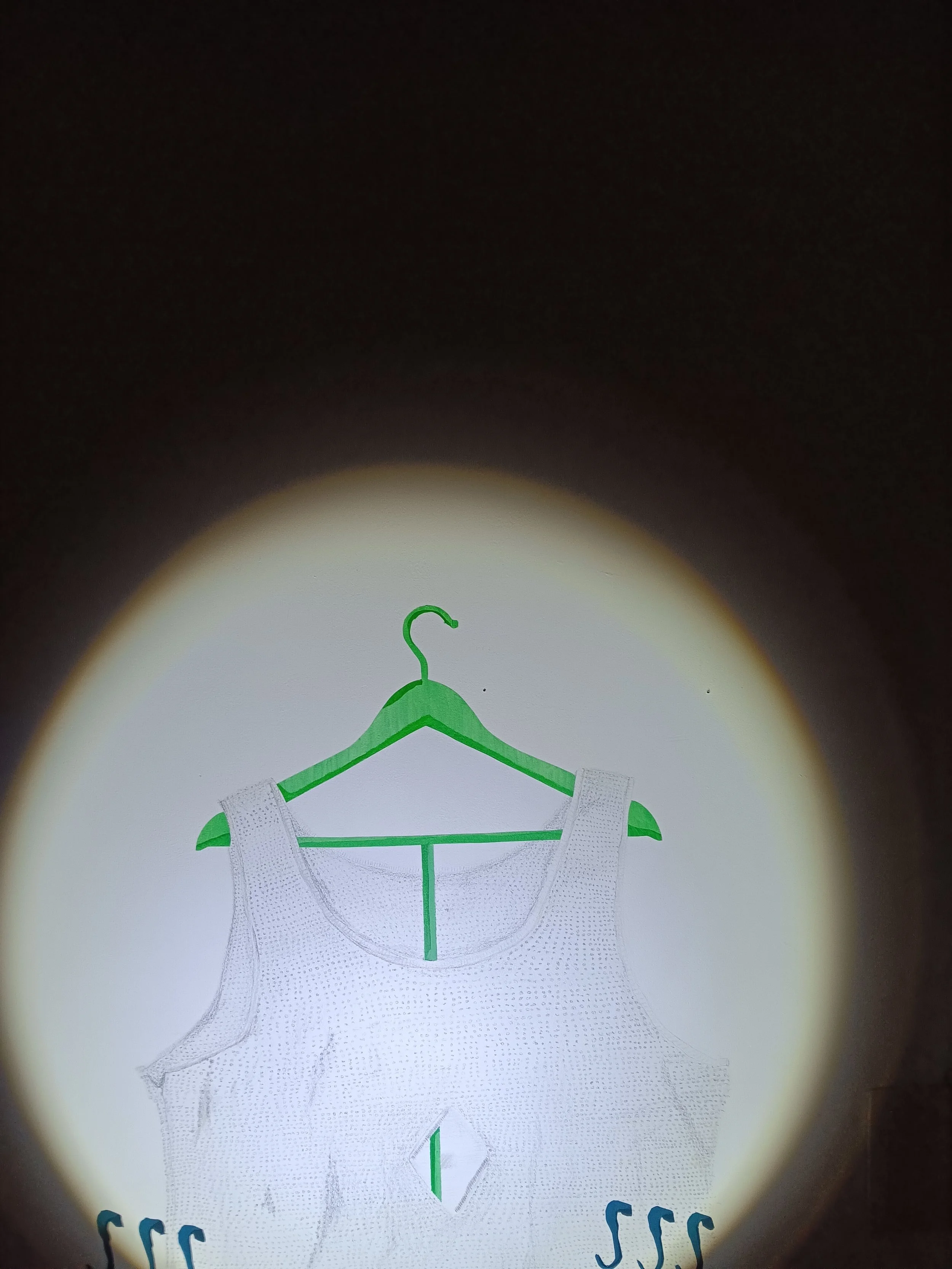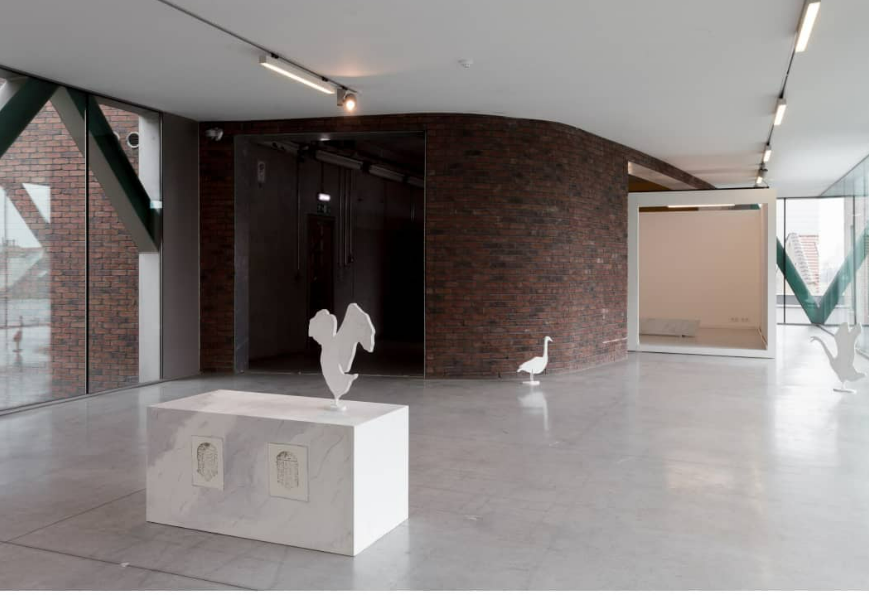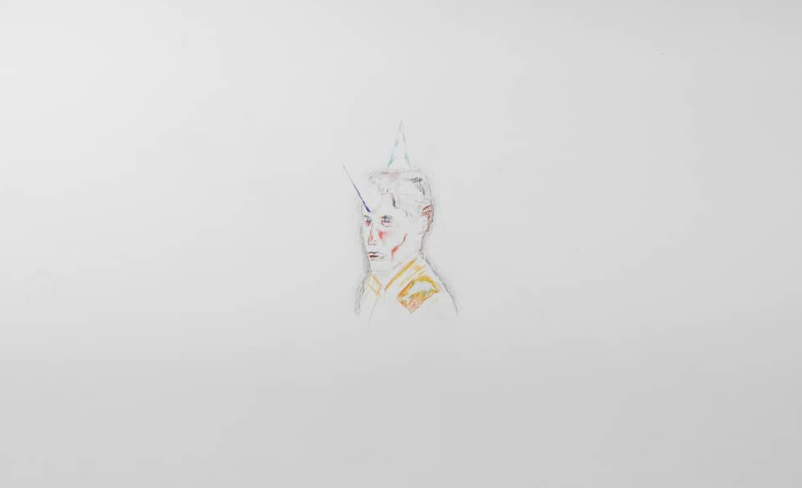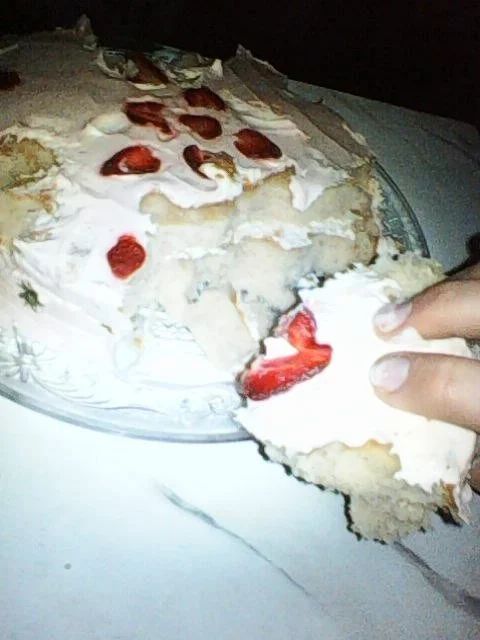Possibly Touching
I was invited by Nello Margodt to exhibit alongside him at Croxhapox, for which I am greatly thankful. The idea behind this exhibition was to showcase works on paper, as we both draw extensively and share a deep appreciation for drawing.
I ended up creating an installation around the drawings, where spectators can enjoy a piece of strawberry cake from pedestals painted with motifs of bees and flowers. This motif references the story often told to children to explain where babies come from and can also be found on the walls.
When the spectator takes a piece of cake, they inevitably leave crumbs on the pedestal, much like birds pecking at fat balls. The cake serves as a lure, drawing visitors into the space. On the pink-painted wall, a portrait gazes at the viewer, surrounded by drawings of swans and geese.
Pictures possibly touching by Sid Dankers
JONGENS DIE PROBEREN TE WENEN
JONGENS DIE PROBEREN TE WENEN
ELIAS DRIESEN
LUCY, PEAKS
RUE BORDIAU 15
18 OCTOBER, 2024
At number 15 in a street on the edge of the European Quarter. A Friday evening. Tired footsteps gather, lighten up and head towards a market. The weather is mild.
Lucy, peaks opens the pigeon-blue door of a bourgeois house. I bend down to go through the service entrance. It's dark. Three rooms in a row. The first with bikes, the second, a kitchen, the third with a table and a view of a city garden. The position, on the entresol, means that my gaze is at the level of the grass. I look up to see two young men sitting on a bench on the left-hand side. One bald with a suit and tie (the artist), the other in black with high lace-up shoes (his brother).
Silence except for a BOSE loudspeaker placed on the table. From it I hear the sounds of the outside world. Very distinctly, including the quiet of the indoor island. The rectangular window frames the stage and separates the darkness inside, where I'm standing, from the fading light of the garden. The two individuals are rubbing and scratching painted wooden objects. These objects, previously laid out on the grass, remind me of Ola's Racket ice-creams, which the artist has already painted. Others saw them as baby bottles or condoms. These variations lead to different interpretations of the nature of the relationship between the two men. There are few clues. Interaction is minimal. The man in black is absorbed in his telephone and the bald man seems lost in his world of princes, swans and unshed tears.
The performance, in a loop, includes a sequence:
- In the kitchen. The man in the suit enters first and leans against the sink. Illuminated by his mobile phone, he listens to a recording of what seems to be him crying. Not loud sobs, but delicate, liquid moans. Why is he listening to himself? Is it a way of helping himself to cry again? It’s not working. The man in black enters and also leans against the edge of the kitchen, but on the other side. He turns on the cooker hood light and plunges back into his phone. Does he lack empathy? Or is he used to the presence of this melancholic person in his kitchen?
- In the garden. The man in the suit is kneeling, pressing his mobile phone against the window. On the screen, a video of his silhouette behind the fogged-up glass of a shower. Naked, he removes the mist. The sound of rubbing against the glass can be seen through two other windows, that of the telephone and that of the window;
- In the garden. The artist is lying down with his head raised. At various intervals he stammers out the phrase ‘boys who try to cry’, and each time the loudspeaker emits pre-recorded 80s-style laughter;
- In the garden. The two men hug. The only moment of contact. A succession of embraces, with the microphones transmitting the shock of the chests. Tender and virile at the same time. Especially that hand that gently caresses the back of one of the companions;
Restrained. Words and tears have a hard time coming out. I am drawn to the artist's stammering over his swan, which changes from ‘the swan’ to ‘the one’ and is both ‘with no fears and no tears’ and ‘with fears and tears’. The vulnerability of a man in a crumpled suit. The insouciance of the young man who moves effortlessly from his screen to a tender embrace and then picks up the wooden objects. No questions asked.
The interplay of screens, windows, microphones and recordings seems just right. An intimate peformance but at a respectful distance from us and the artist. And then there's the warm beauty of the outside sound that comes through so clearly in the darkness of the house. An aerial soundtrack of birdsong, nightfall and planes taking off. We stay on earth with the kitchen’s extractor hood, the recorded laughter and the omnipresence of the telephone screens.
The young man in black with his high shoes and his German-Slavic name, Anton, takes me back to the last century. To when this house must have been built, in the rural hills north-east of Brussels. I'm reminded of Hermann Hesse's book ‘The Steppe Wolf’, and the story of Harry Haller, torn between his melancholic, solitary personality and his desire to belong to bourgeois society. Elias Driesen's duet is a reference to the double, but more as the expression of a brotherly friendship where the ‘weaknesses’ of the other - addiction to mobile phones or tears - are accepted without drama. Anton and Elias, Elias and Anton. The plural of the title indicates that both are trying to cry. If it's obvious for one of them, for the other it's harder to imagine what's behind his silence and casualness. Who needs to cry more?
Post Scritum I
The performance took place in my house, but this evening I felt like a spectator like any other. I was welcomed into a place that was no longer entirely familiar, with the artist's own energy and unusual sounds. I attended all the rehearsals (of which there were many!) but I plunged back into the basement, feeling that delicious sense of strangeness all over again.
Post Scritum II
Lucy, peaks. What a fine group of people. Pampering the creative energy of a friend while providing invaluable logistical/material/human support (lighting, sound, visitor reception, communication, documentation). Their choice of unusual locations awakens something in me that's different from the usual exhibition venues. Curiosity and the joy of occupying public and private spaces. Especially when a crowd gather on a peripheric pavement that's usually so calm.
Roshan Di Puppo
text written by Roshan Di Puppo for EACHBXL
Pictures jongens die proberen te wenen by Amel Omar
little struggle #2, I would be a jacket, Keep up with the sample tracks. / collaboration with Nello Margodt, 2024
In this performance/installation, I collaborated with Nello Margodt. We each have different conceptual views on what happened. The exhibition centers around clothes. As you move through the living room, you’ll see my favorite pieces of clothing drawn on the wall. Nello created coat hangers specifically for these drawings. For me, this series is about exploring my masculinity, simply questioning it—nothing more. The installation was accompanied by a performance in which we theatrically explored the actions we take with clothing: how we wear it, fold it, hang it, and so on.
It is the cake you should get a bite out. You shouldn't try to bite a shark. You should try to kiss a girl. A bite out of the shark is less satisfying then a bite out of the cake. The jawline of the shark is impressive. Like the jawline of a girl can be. The cake doesn't have a jawline. The cake makes your jawline. The toppings are yours. But do not choose the toppings out of necessity. Choose it because of wat the topping is. Not wat the topping should be. The topping you should be, already has been decided. Like the shark is decided. You shouldn't bite the shark.
You should try to kiss the girl. And try to bake the cake.
little struggle #1,2023
This is the first show in my series Little Struggles. In this series, I explore different ways to present and display images. For this particular exhibition, the perspective is intentionally set from a duck’s point of view, yet it is designed for human audiences. The installation is accompanied by a soundscape in which I mimic the sounds of ducks, adding an auditory layer that deepens the immersive experience of seeing through the duck's perspective.
Judgy Judgy Judge, 2021
In this installation/performance, I question the current form of juries. I do this through the recitation of a poem that I have specially written for this occasion. In the poem, I explore the role and functioning of juries and the impact they have on the individuals and works being judged. With this recitation, I hope not only to raise critical questions about the functioning of juries but also to start a dialogue about possible alternatives or improvements in the way assessments are conducted.
Judgy judgy judge. The magnolia tree is in bloom. The magnolia is too pink. The magnolia should be cut.
Judgy judgy judge. I'ts the magnolia that is judging you.
It doesn't matter wat has been judged. It does matter who should be judged. Don't judge the piggy. judge the wolf. Protect the piggy. Don't eat it.
Put your teeth in me. Feel me suffer. Take me to the magnolia tree.
The magnolia tree is too pink.
HOCUS POCUS.
We live in a pink world.
Even the judge is pink.
Judgy judgy judge. Did not change at all. Everything is pink. And the judge is the pinkest.
The magnolia is still too pink. It comes too close to the pinkness from the judge.
So the judgy judgy judge. Judged.
The magnolia should be cut.
The magnolia has been cut.
Untitled, 2020
The paintings are inspired by Space Invaders, an arcade game that visually attracted me. In this series, I explore the game visually. I quickly grew tired of the simplistic representation of space in Space Invaders, so I began introducing other themes into these paintings, which is how they became so eclectic.






